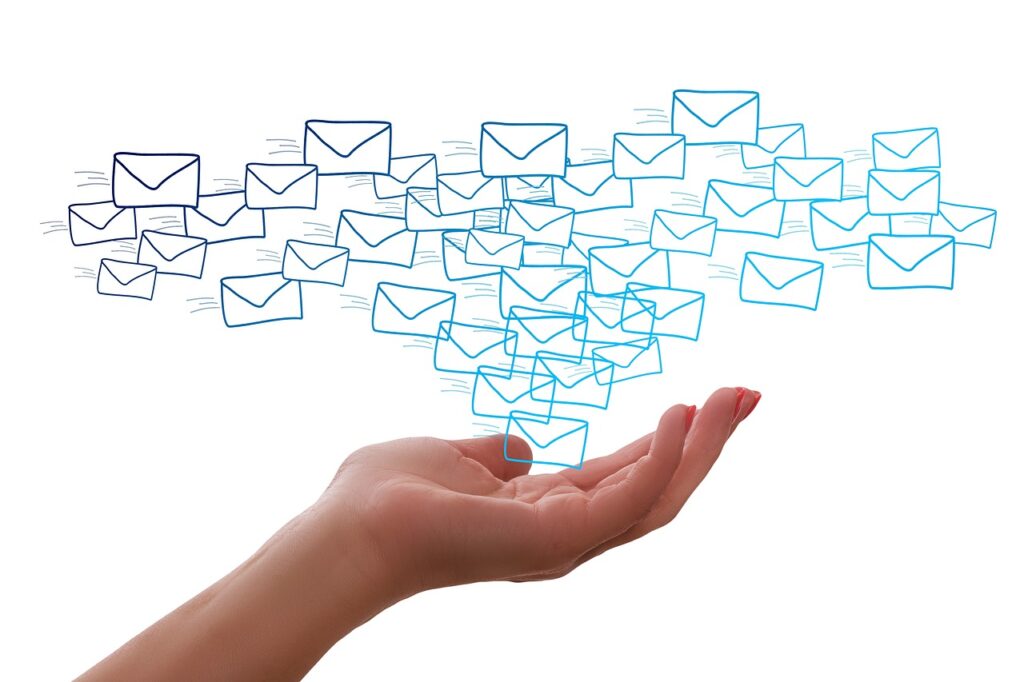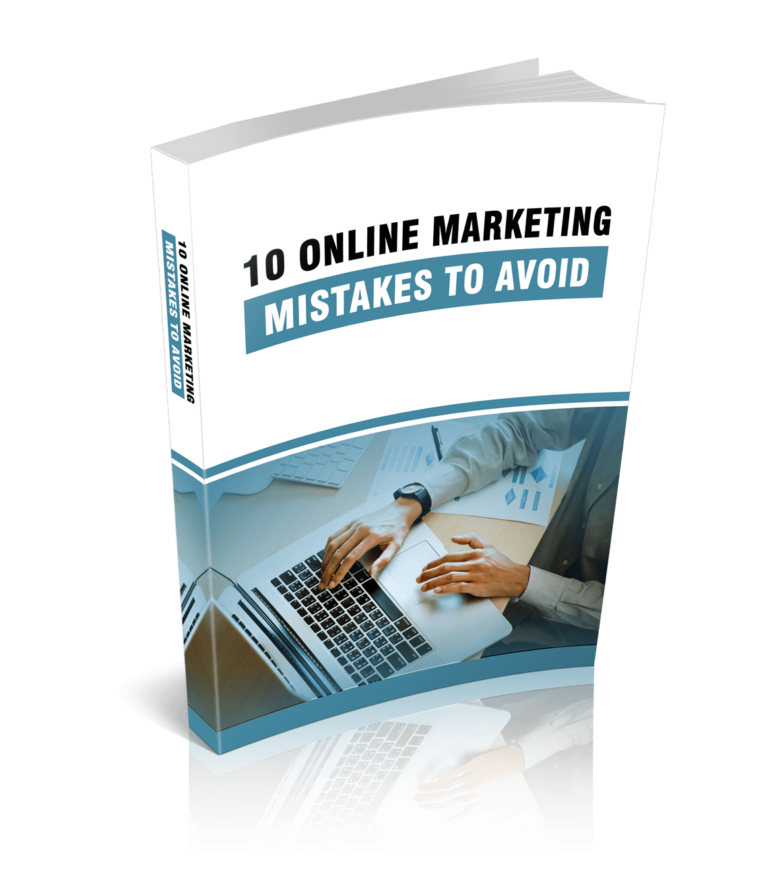Email is one of the most important tools in a modern business’s arsenal. It’s a quick, easy way to communicate with clients, customers, and colleagues. But, all too often, emails are dull, unengaging, and uninspiring.
If you want your emails to be read and acted upon, it’s important to make them engaging.
Here are some tips:
SUBSCRIBE TO INCOME PATROL
Get updates on the latest posts and more from Income Patrol straight to your inbox.
KEEP IT SHORT AND SWEET.
Don’t write War and Peace. Keep your emails short and sweet. That way, your recipients are more likely to read them and engage with what you’re saying.
Think about what you want to say before you start writing. What is the purpose of your email? What do you want your recipients to do after reading it? Keep these goals in mind as you write, and make sure every word contributes to achieving them.
GET TO THE POINT.
It can be easy to get caught up in the details when writing an email, but sometimes, less is more. In order to engage your reader and prevent your email from sounding like a novel, try getting straight to the point.
Be clear about what you want to say from the beginning. Your readers will appreciate your directness and be more likely to engage with the email. If you meander through your email, you may lose your reader’s attention.
In addition, use strong verbs to convey your message. This will make your email sound more active and engaging. For example, instead of “I am writing to inform you”, try “I am informing you”.
Finally, try to keep your sentences and paragraphs short. Long blocks of text can be daunting and off-putting for readers. If you can break up your email into smaller chunks, it will be more digestible and engaging.
USE STRONG SUBJECT LINES.
One of the best ways to increase the chances that your email will be read is to use a strong subject line. A strong subject line is one that is clear, concise, and to the point. It should give the reader a good idea of what the email is about, without being too long or too vague.
Here are some tips for creating strong subject lines:
● Keep it short and sweet.
● The subject line is not the place to write a novel. Keep it to around 50 characters or less.
● Be clear about the purpose.
● Your subject line should state the purpose of the email in a clear and concise way. For example, “Order confirmation for XYZ Widgets” is much better than “Your order has shipped!”
● Be specific.
● Vague subject lines are often ignored. Be as specific as possible, without being too long. For example, “Follow up on our conversation about the ABC project” is better than “Just checking in.”
● Use keywords.
● Including keywords that are relevant to the email’s content can help to improve the chances that it will be opened. For example, if you’re emailing a potential customer about a new product, you might include the keyword “new product” in the subject line.
● Avoid using “spam” words.
● There are certain words and phrases that are commonly used in spam emails, and including them in your subject line is likely to get your email filtered as spam. Some examples of these “spam words” include “free,” “win,” and “act now.”
● Personalize it.
● If you have the recipient’s name, you can use it in the subject line. For example, “Mary, thanks for your order!” This can help to increase the likelihood that the email will be opened.
● Use urgency.
● If there’s a reason why the email should be opened and read immediately, make that clear in the subject line. For example, “Your order is ready for pickup” or “Time-sensitive: XYZ Widgets on sale now!”
● Test different subject lines.
● If you’re not sure which subject line will work best, try testing a few different options. Send the same email with different subject lines to a small group of people and see which one gets the most open.
● Keep it consistent.
● If you use a certain format for your subject lines (such as listing the email’s purpose first), stick to that format. Consistency will help recipients to recognize and trust your emails.
Email subject lines are important, but they are just one part of the equation. The quality and content of your email are also important factors in whether or not it will be read. But if you use a strong subject line, you’re more likely to get your email opened and read, which is the first step towards a successful email communication.
BE PERSONAL.
“Be personal in writing emails.” This is something we’ve all heard before, but what does it mean, and how can we actually do it?
When we’re communicating with someone via email, it’s easy to forget that there’s a real person on the other end. We might not be able to see them, but they’re there, and they deserve to be treated with the same respect and courtesy that we would give them in person.
Here are a few tips to help you be more personal in your emails:
- Use the person’s name.
When you’re addressing someone in an email, make sure to use their name. It’s a small detail, but it makes a big difference. It shows that you’re taking the time to personalize your message, and it will make the person feel appreciated.
- Write in a friendly tone.
Your tone of voice can be difficult to convey in an email, but it’s important to try. Write as if you’re speaking to the person, and use friendly words and phrases. Avoid sounding formal or stiff – it’ll make your email feel more like a letter than a conversation.
- Share something personal.
Email is often seen as a business tool, but that doesn’t mean you can’t share a little bit of yourself. If you have something in common with the person you’re emailing, mention it! It’ll help create a connection and make your email feel more personal.
- Ask questions.
Asking questions is a great way to show that you’re interested in the person you’re emailing. It shows that you care about what they have to say, and it gives you an opportunity to learn more about them.
- Use emojis.
Emojis are a fun way to add personality to your emails. They can help convey your tone of voice and add a bit of flair. Just don’t overdo it – a few emojis here and there are plenty.
- Keep it short.
Long emails can be overwhelming, so try to keep yours shorter whenever possible. Get to the point and then move on – the person you’re emailing will appreciate it.
- Proofread.
Before you hit send, take a moment to proofread your email. This will help you avoid any typos or grammatical errors, and it’ll make your email look more professional.
- Follow up.
If you’re waiting for a response to your email, follow up! A polite follow-up email shows that you’re still interested in the conversation, and it’ll help keep the communication going.
Use images.
Images can be a great way to add some personality to your emails, and they can also help to get your message across more effectively. Here are some tips on using images in emails:
- Make sure the images you use are relevant to the email content.
- Choose images that are clear and easy to understand.
- Avoid using too many images, as this can make your email look cluttered.
- Use descriptive alt text for your images so that recipients who can’t see them still know what they represent.
- Be careful with image file sizes, as large files can cause your email to load slowly.
USE HUMOR.
When it comes to writing emails, using humor can be a great way to make a connection with the person you’re communicating with. Whether you’re sending a casual message to a friend or a more formal email to a business associate, injecting a bit of humor can help to break the ice, build rapport and make the message more memorable.
Of course, it’s important to use humor in a way that is appropriate for the situation and the relationship. For example, you wouldn’t want to crack jokes with someone you’ve just met or make light of a serious issue. But if used sparingly and judiciously, humor can be a real asset in email communication.
Here are a few tips for using humor in your emails:
- Keep it light. When in doubt, err on the side of caution and go for humor that is light and gentle.
- Avoid sarcasm. Sarcasm doesn’t always come across well in written communication, so it’s best to avoid it altogether.
- Be aware of cultural differences. What might be funny in your culture could be offensive in another, so be mindful of this when sending emails to people from other countries.
- Use emoticons sparingly. A well-placed emoticon can add a touch of humor to an email, but too many can be off-putting.
- Keep it short. A long, rambling email is not the best vehicle for humor. Stick to one or two funny lines and then move on to the rest of your message.
BE GENUINE.
Whether you’re emailing a potential client or customer, or you’re emailing a colleague or business partner, being genuine in your correspondence can help to build a rapport and strengthen relationships.
Here are a few tips on how to be more genuine when writing emails:
- Avoid sounding robotic or scripted.
When you sound like you’re reading from a script, it can come across as insincere. Instead, write in a natural, conversational tone. This will help to make your emails sound more genuine.
- Use personal pronouns.
Using personal pronouns such as “I” and “me” can help to make your emails sound more personal and genuine.
- Be polite and courteous.
If you want to sound genuine in your emails, it’s important to be polite and courteous. Avoid sounding rude or abrupt in your correspondence.
- Use positive language.
Using positive language in your emails can help to make them sound more upbeat and genuine. Avoid using negative words and phrases, and focus on writing in a positive way.
- Be genuine in your compliments.
If you’re going to compliment someone in an email, be genuine about it. Avoid sounding insincere or false in your compliments.
- Be careful with humor.
Humor can be a great way to sound more genuine in your emails, but you need to be careful. Not everyone appreciates the same type of humor, so it’s important to use it sparingly and only with people who you know will appreciate it.
- Avoid sounding sales-y.
If you want to sound genuine in your emails, avoid sounding like you’re trying to sell something. Focus on building relationships and providing value, and the sales will follow.
TELL A STORY.
When it comes to writing emails, it can be easy to get bogged down in the details and lose sight of
the bigger picture. But if you want your emails to be truly effective, it’s important to remember that, at the end of the day, email is all about storytelling.
Think about it: every email you write is an opportunity to tell a story. Whether you’re sharing news about your company or sharing a personal update with a friend, the ability to tell a story is what makes email such a powerful communication tool.
● Of course, not every email needs to be a novel. But if you keep the following tips in mind, you’ll be able to infuse your emails with the power of storytelling, no matter what the message may be.
● Start with a strong opening.
● The first few sentences of your email are crucial. They’re your opportunity to grab the reader’s attention and set the tone for the rest of the message. So take your time and craft a strong opening that will engage the reader and make them want to read on.
● Use vivid language.
● One of the best ways to bring your stories to life is to use vivid, descriptive language. Whether you’re describing a new product launch or recounting a recent vacation, the more detail you can provide, the better.
● Use images and videos.
● A picture is worth a thousand words, and that’s especially true when it comes to email. If you have a photo or video that helps illustrate your story, be sure to include it in your message.
● Keep it concise.
● Email is a quick-moving medium, so it’s important to be concise in your storytelling. That doesn’t mean your stories have to be short, but it does mean you should focus on the most important details and leave out anything that’s not absolutely essential.
● End with a call to action.
● Your email story should always have a purpose, and that purpose should be clear to the reader from the very beginning. As you near the end of your message, be sure to include a call to action that tells the reader what you want them to do next.
USE AN ACTIVE VOICE.
Active voice makes your email sound more assertive and confident. It also makes it easier for the recipient to understand your message. To use active voice in your emails, simply write your sentences using the subject + verb + object format. For example, “I am writing to inform you that the project is complete.” This is a simple, yet effective way to use active voice in your emails.
BE YOURSELF.
Email is a great way to connect with people, but it can also be a place where you can easily come across as fake or inauthentic. If you want to build strong relationships with the people you email, it is important to be yourself. Here are a few tips for how to be yourself while writing emails:
● Be honest in your interactions. This means being truthful about who you are, what you do, and how you feel. If you are not honest, people will quickly see through you and your emails will come across as insincere.
● Be genuine in your interactions. This means being authentic and showing your true colors. People can tell when you are being fake, so it is important to be genuine.
● Be confident in your interactions. This means having faith in yourself and your abilities. If you are not confident, people will pick up on it and your emails will come across as timid.
● Be polite in your interactions. This means using please and thank you, and avoiding any offensive language. Politeness goes a long way in emailing, and it will make your emails more pleasant to read.
● Be interesting in your interactions. This means having something interesting to say. No one wants to read a boring email, so make sure you have something to share that will capture people’s attention.
By following these tips, you can be sure to come across as your genuine self in your email interactions. Building strong relationships with the people you email is important, and it starts with being yourself.
CONCLUSION
Email is a key tool in modern communication, with the average office worker receiving 121 emails per day, according to a study by The Radicati Group. But with such a high volume of messages, it’s more important than ever to make sure your emails stand out.
Follow the secrets we discussed in this report and you are surely going to see a massive improvement in your email open rates.
LIMITED-TIME OFFER!
With LIFETIME ACCESS membership ($67) you have access to ALL exclusive materials (current and upcoming) for lifetime. We create new courses, ebooks, webinars and downloads on a regular basis. This offer expires soon and will be replaced with monthly-paid subscription, so hurry up! Get access HERE!





